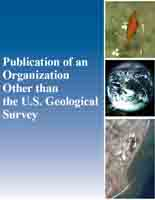Recovery of endangered salmon species in the Central Valley of California amidst prolonged drought and climate change necessitates innovative water management actions that balance species recovery and California's water demands. We describe an individual-based ecological particle tracking model (ECO-PTM) that can be used to assess the efficacy of proposed actions. Based on a random walk theory, the model tracks individual particles’ travel time, routing and survival in a flow field simulated by the Delta Simulation Model 2 hydrodynamic module (DSM2 HYDRO). The random walk particles are parameterized to have fish-like swimming behaviors, including upstream/downstream swimming, probabilistic holding behaviors, and stochastic swimming velocities. Particle routing at key junctions is based on well-established statistical models, and route-specific survival is calculated using the XT mean free-path length model. Behavioral parameters were estimated by fitting several competing models to a multiyear dataset of travel times from acoustic tagged juvenile salmon. The model’s baseline simulations under historical flow conditions from 1991 to 2016 successfully replicated essential relationships between salmon outmigration survival and hydrodynamic conditions, consistent with previous studies and the STARS (Survival Travel Time and Routing Simulation) statistical simulation model. Simulation results for management scenarios revealed multifaceted influences on fish survival, including Delta flow, flow at key junctions, route alterations, seasons, and water year characteristics. Importantly, these results highlight ECO-PTM’s potential to predict fish survival outcomes of proposed actions, serving as a foundation for informed future research, decision-making, and effective management strategies to enhance the survival prospects of out-migrating salmonids within the Sacramento-San Joaquin Delta ecosystem.


